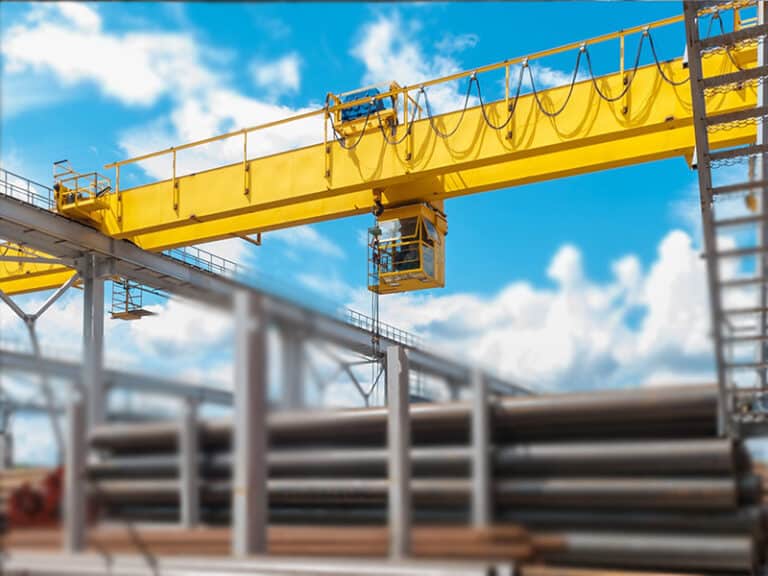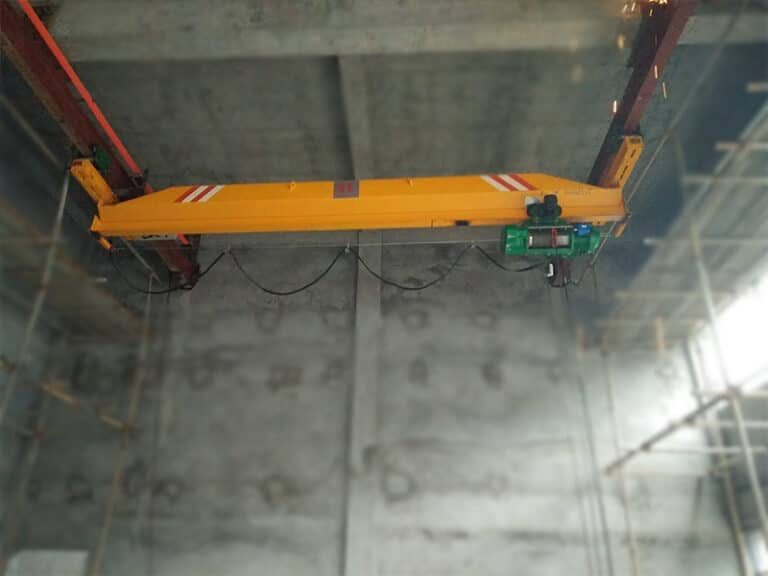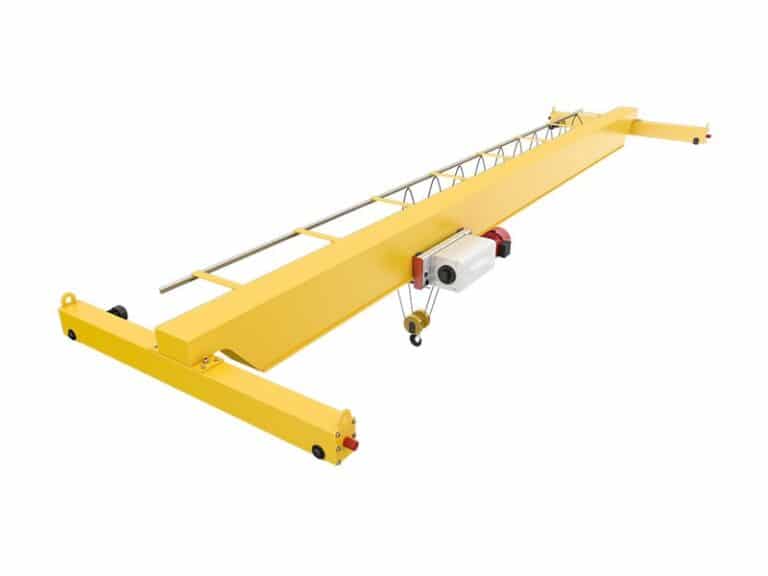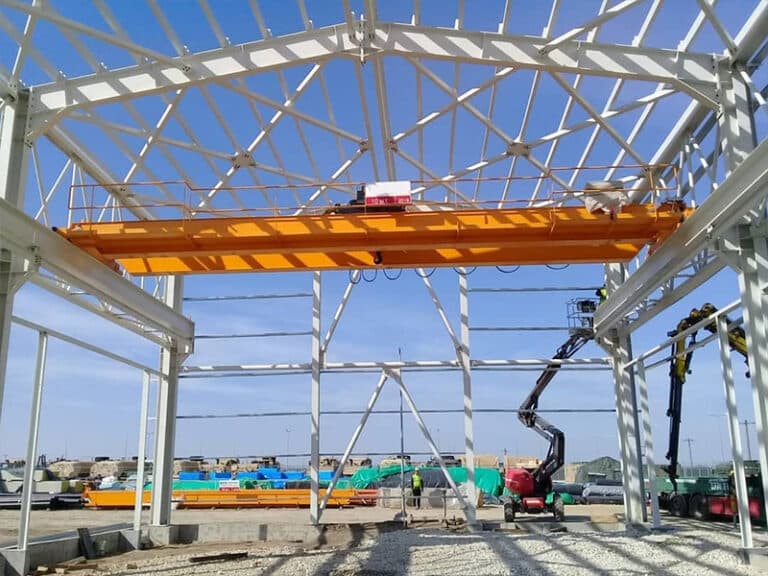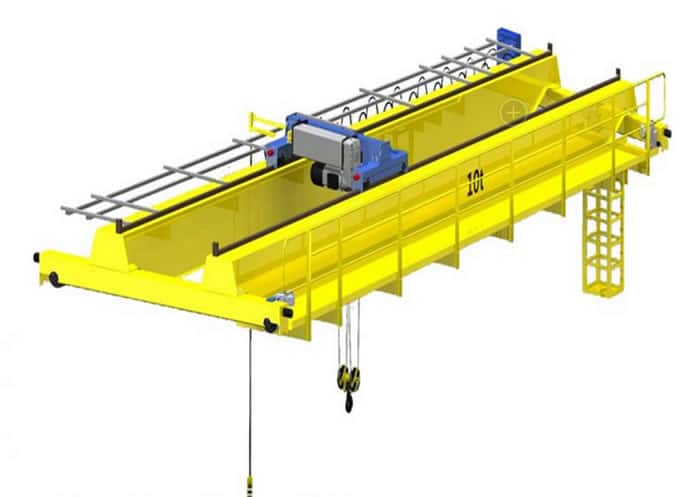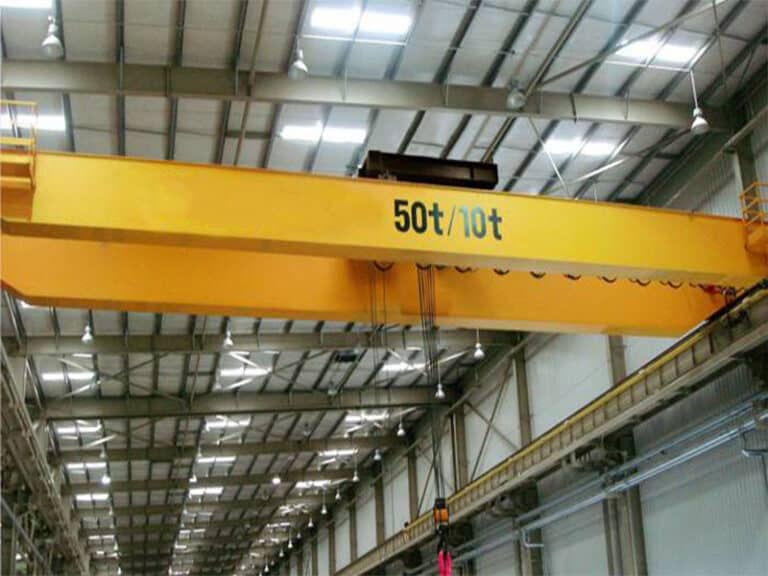overhead crane hazards
Overhead cranes are a crucial part of many industrial operations. They are used to move heavy objects and equipment, making it easier and more efficient to transport materials around the job site.
However, there are potential hazards associated with the use of overhead cranes that workers must be aware of to ensure their safety.
Overloading the crane: One of the most significant hazards associated with overhead cranes is overloading. When a crane is overloaded, it can tip over, causing severe accidents. It is crucial to adhere to the weight limits of the crane strictly.
Dropped loads: Dropped loads are another significant hazard associated with overhead cranes. When a load drops from the crane, it can cause severe injury or even death. Operators must ensure that the load is secured correctly before lifting it.
Collisions: Collisions with other machinery or structures are another potential hazard associated with overhead cranes. Operators must be aware of their surroundings at all times and ensure that they have adequate clearance to move the crane without hitting any obstacles.
Electrical hazards: Overhead cranes are powered by electricity, making them a potential source of electrical hazards. Workers must ensure that they follow all electrical safety procedures when working with overhead cranes.
Operator error: Operator error is another potential hazard associated with overhead cranes. Untrained or inexperienced operators can cause accidents and put everyone in the area at risk.
Poor maintenance: Overhead cranes require regular maintenance to ensure that they operate correctly and remain safe for use. Any damages or faults in the crane’s structure or machinery should be immediately reported and repaired.
In conclusion, understanding the potential hazards associated with overhead cranes is essential to ensure the safety of workers on the job site. By adhering to weight limits, securing loads correctly, being aware of surroundings, following electrical safety procedures, training operators, and conducting regular maintenance, we can prevent accidents and ensure the safe and efficient use of overhead cranes.
overhead crane hazard assessment
Overhead cranes are powerful machines that can move heavy objects and equipment with ease. However, they also present potential hazards that can cause severe injury or even death. A hazard assessment is an essential step in identifying and controlling these hazards to ensure the safety of workers on the job site.
A hazard assessment involves identifying potential hazards associated with overhead cranes and determining the likelihood and severity of those hazards. The assessment should include a review of the equipment, work area, and procedures to identify potential hazards.
To conduct a hazard assessment for overhead cranes, the following steps should be taken:
- Identify potential hazards: Begin by identifying potential hazards associated with overhead cranes, such as overloading, dropped loads, collisions, electrical hazards, operator error, and poor maintenance.
- Determine likelihood and severity: Assess the likelihood and severity of each potential hazard identified in step one. Consider the frequency of the hazard, the number of workers who could be affected, and the potential severity of the injury.
- Control measures: Develop control measures to prevent or minimize the identified hazards. For example, use load limits, secure loads properly, ensure clearances are adequate, follow electrical safety procedures, train operators, and conduct regular maintenance.
- Implement controls: Once the control measures have been developed, they should be implemented in the workplace. This may involve modifying equipment, changing procedures, or providing additional training to workers.
- Monitor and evaluate: Monitor the effectiveness of the control measures and evaluate their success in reducing the identified hazards. Make adjustments as necessary to ensure the continued safety of workers on the job site.
In conclusion, conducting a hazard assessment for overhead cranes is crucial to identify and control potential hazards that can cause severe accidents. By identifying potential hazards, determining likelihood and severity, developing control measures, implementing controls, and monitoring and evaluating, we can ensure the safe and efficient use of overhead cranes on the job site.
overhead crane hazard control measures
Overhead cranes are powerful machines that can move heavy objects and equipment with ease. However, they also present potential hazards that can cause severe injury or even death. A hazard assessment is an essential step in identifying and controlling these hazards to ensure the safety of workers on the job site.
A hazard assessment involves identifying potential hazards associated with overhead cranes and determining the likelihood and severity of those hazards. The assessment should include a review of the equipment, work area, and procedures to identify potential hazards.
To conduct a hazard assessment for overhead cranes, the following steps should be taken:
- Identify potential hazards: Begin by identifying potential hazards associated with overhead cranes, such as overloading, dropped loads, collisions, electrical hazards, operator error, and poor maintenance.
- Determine likelihood and severity: Assess the likelihood and severity of each potential hazard identified in step one. Consider the frequency of the hazard, the number of workers who could be affected, and the potential severity of the injury.
- Control measures: Develop control measures to prevent or minimize the identified hazards. For example, use load limits, secure loads properly, ensure clearances are adequate, follow electrical safety procedures, train operators, and conduct regular maintenance.
- Implement controls: Once the control measures have been developed, they should be implemented in the workplace. This may involve modifying equipment, changing procedures, or providing additional training to workers.
- Monitor and evaluate: Monitor the effectiveness of the control measures and evaluate their success in reducing the identified hazards. Make adjustments as necessary to ensure the continued safety of workers on the job site.
In conclusion, conducting a hazard assessment for overhead cranes is crucial to identify and control potential hazards that can cause severe accidents. By identifying potential hazards, determining likelihood and severity, developing control measures, implementing controls, and monitoring and evaluating, we can ensure the safe and efficient use of overhead cranes on the job site.
caution overhead crane
When it comes to industrial operations, overhead cranes are an essential tool that provides many benefits to businesses. However, it is essential to understand the potential hazards associated with using these machines to ensure that everyone is safe on the job site.
One of the most important factors to consider is the weight capacity of the crane. Overloading the crane can cause it to tip or break, leading to severe accidents. Therefore, it is crucial to understand the weight limits of the crane and adhere to them strictly.
Another critical factor to consider is the maintenance of the crane. Overhead cranes require regular maintenance to ensure that they operate correctly and remain safe for use. Any damages or faults in the crane’s structure or machinery should be immediately reported and repaired.
Additionally, the operator of the crane must be trained and certified to operate the equipment. The operator must also be alert and focused at all times while operating the crane, ensuring that they follow all safety procedures and guidelines.
It is also essential to be cautious of the environment in which the crane operates. The crane should be used in an area free of obstacles, and the operator should be aware of the surroundings to prevent collisions with other machinery or structures.
In conclusion, overhead cranes provide numerous benefits to industrial operations, but it is essential to take caution to prevent accidents. Understanding the weight capacity, regular maintenance, operator training, and awareness of the environment are all critical factors in ensuring the safe and efficient use of overhead cranes.
overhead crane sign meaning
Overhead cranes are heavy-duty machines commonly used in industrial settings to move heavy objects. However, as with any heavy machinery, there are potential dangers associated with their use, which is why it’s crucial to understand the meaning behind “Danger Overhead Crane” signs.
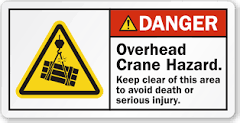
The “Danger Overhead Crane” sign is a warning that alerts workers and visitors to the potential hazards associated with overhead cranes. It indicates that the area around the crane is dangerous and that special precautions should be taken to avoid accidents. The sign serves as a reminder to remain alert and focused when working in the vicinity of the crane.
There are several potential dangers associated with overhead cranes. One of the most significant risks is the weight capacity of the crane. Overloading the crane can cause it to tip or break, leading to severe accidents. Therefore, it is crucial to adhere to the weight limits of the crane strictly.
Another hazard is the risk of collisions with other machinery or structures. The operator must be aware of their surroundings at all times and ensure that they have adequate clearance to move the crane without hitting any obstacles.
The “Danger Overhead Crane” sign also reminds workers to stay clear of the crane’s path when it’s in operation. The crane’s load can swing or drop unexpectedly, causing severe injury or even death.
Additionally, the sign serves as a reminder that only trained and authorized personnel should operate the crane. Untrained operators can cause accidents and put everyone in the area at risk.
In conclusion, the “Danger Overhead Crane” sign is an essential warning that reminds workers and visitors of the potential hazards associated with overhead cranes. By understanding the meaning of this sign and taking the necessary precautions, we can ensure that everyone stays safe on the job site.

